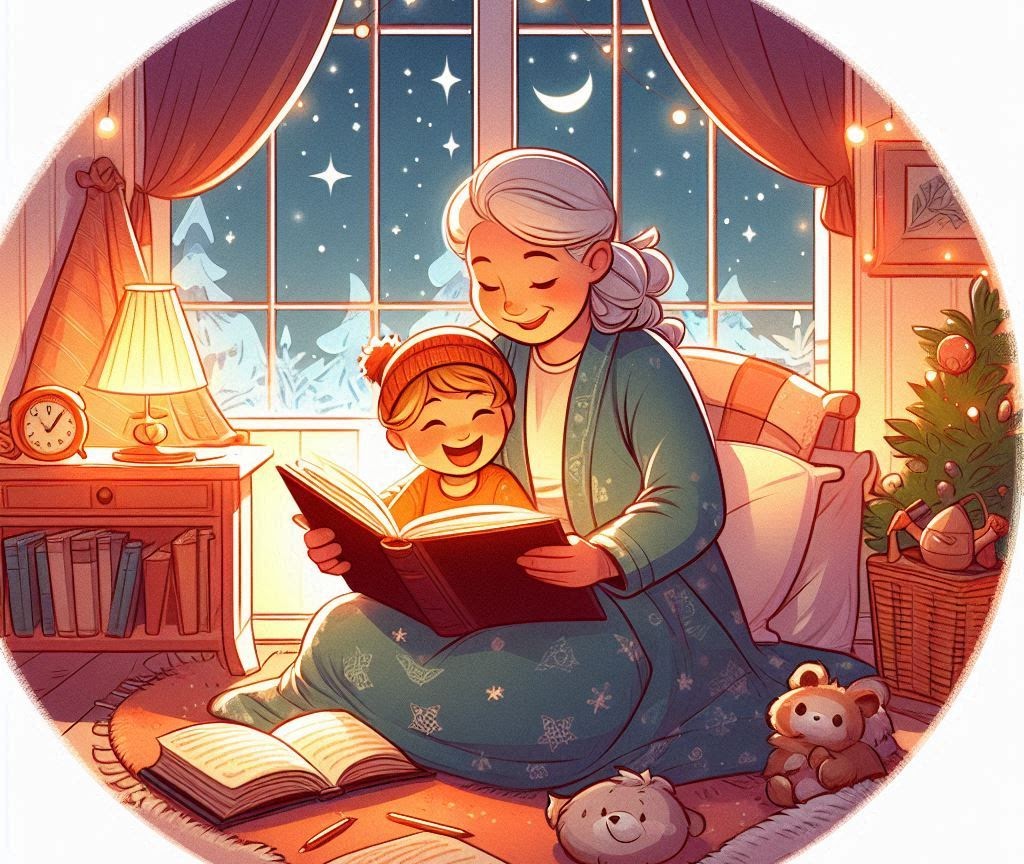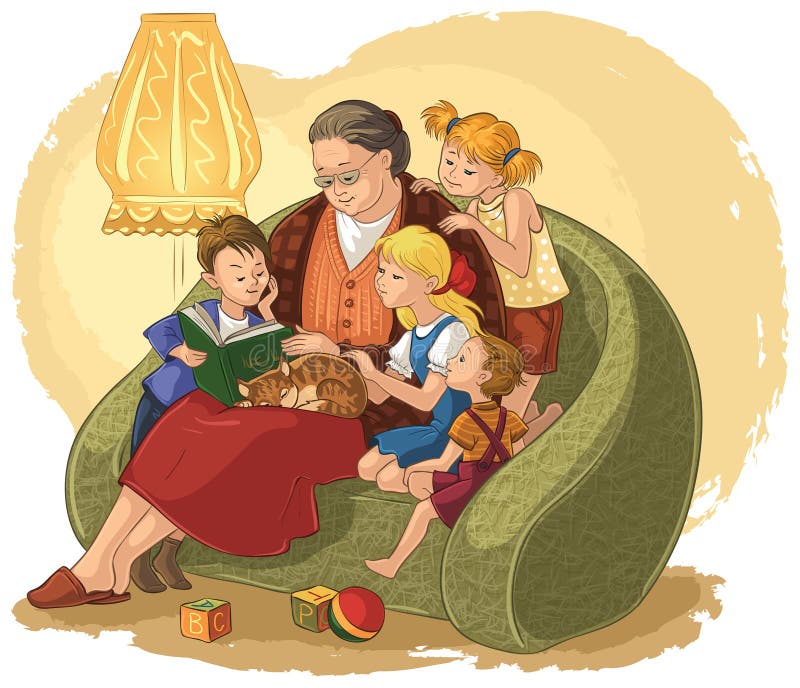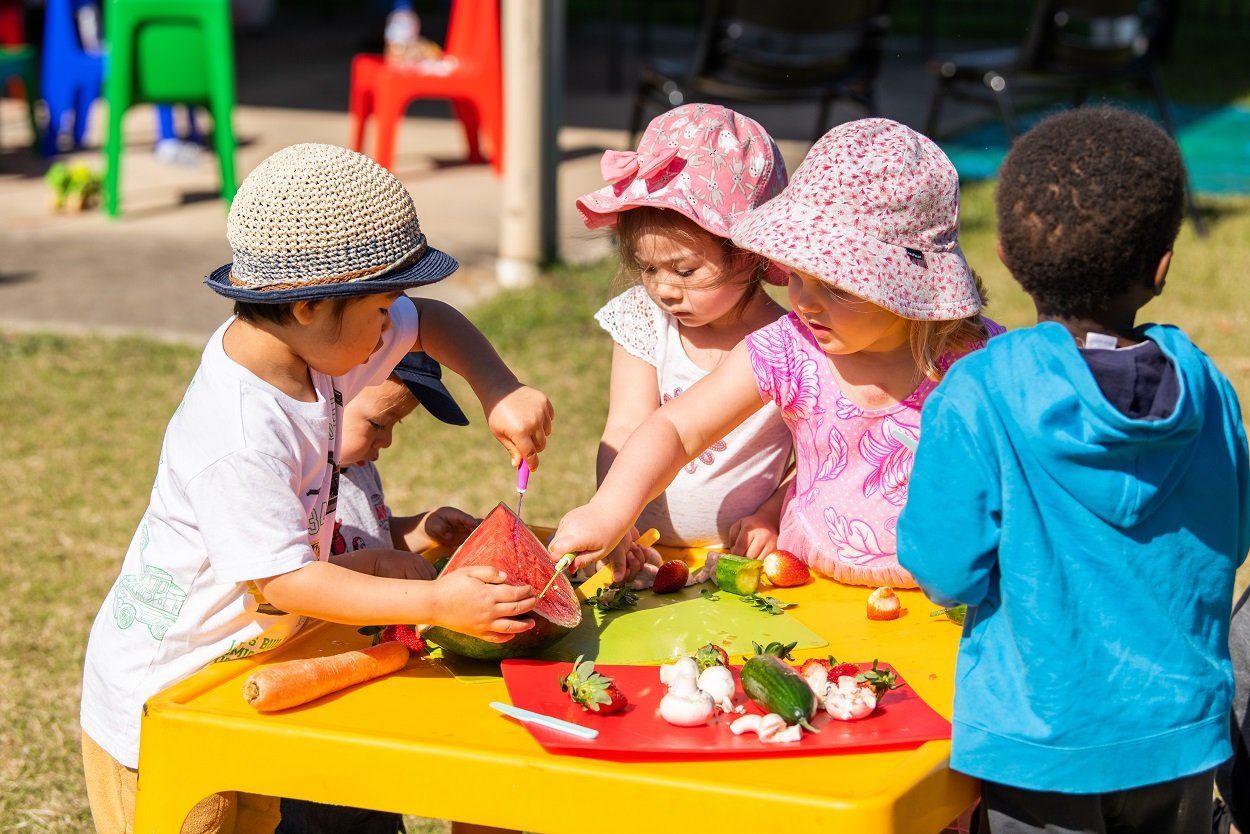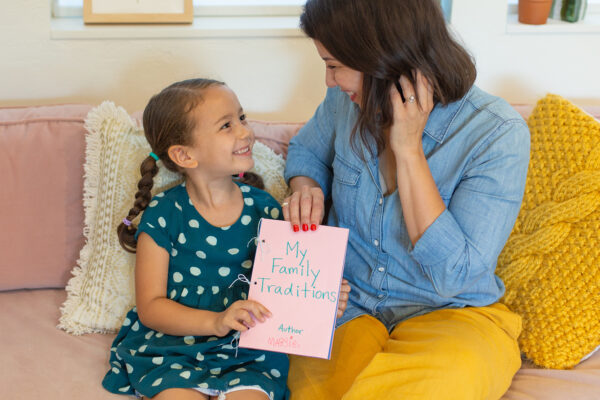How Cultural Stories Shape Child Identity: The Transformative Power of Storytelling in Child Development
How Cultural Stories Shape Child Identity: The Transformative Power of Storytelling in Child Development
Exploring the profound impact of bedtime stories, fairy tales, and cultural narratives on children's psychological development and identity formation

From the moment children first hear "Once upon a time," they embark on a journey that extends far beyond entertainment. Cultural stories, bedtime stories, and fairy tales serve as powerful vessels for identity formation, carrying within them the values, beliefs, and wisdom of generations. These narratives don't merely occupy a child's imagination—they fundamentally shape who they become.
Research in developmental psychology consistently demonstrates that storytelling plays a crucial role in children's cognitive, emotional, and social development. When we share folk tales from our heritage, read diverse picture books, or tell family stories passed down through generations, we're not just entertaining our children—we're actively participating in their identity construction. These magical stories become the building blocks of a child's understanding of themselves, their place in the world, and their connection to their cultural heritage.
of child psychologists agree that storytelling significantly impacts identity development
of children show improved cultural awareness through diverse stories
of families report stronger bonds through regular storytelling
The Science Behind Storytelling and Identity Formation
The relationship between cultural stories and child identity development is rooted in deep psychological processes that begin in early childhood. When children listen to stories, their brains are actively constructing meaning, forming connections, and developing what psychologists call "narrative identity"—the internal story we tell ourselves about who we are.

Narrative Identity Theory in Child Psychology
Narrative identity theory, developed by psychologist Dan McAdams, suggests that we construct our sense of self through the stories we internalize and tell about our lives. For children, this process begins remarkably early. Even toddlers start to understand themselves through the narratives they hear, whether it's a simple bedtime story about a brave little rabbit or a complex fairy tale about overcoming challenges.
Educational stories and moral stories serve as templates for children to understand concepts like right and wrong, courage and fear, love and loss. These adventure stories and fantasy stories provide safe spaces for children to explore different aspects of identity, experimenting with various roles and possibilities for who they might become.
Key Research Finding
Studies show that children who regularly engage with diverse cultural stories demonstrate 40% higher levels of empathy and 35% better understanding of cultural differences compared to their peers who have limited exposure to multicultural narratives.
How the Brain Processes Cultural Narratives
Neuroscience research reveals that when children listen to stories, multiple areas of their brains activate simultaneously. The auditory cortex processes the words, the visual cortex creates mental images, and the frontal lobe integrates this information with existing knowledge and experiences. This multi-dimensional engagement makes storytelling one of the most effective ways to transmit cultural values and shape identity.
Interactive stories and illustrated books enhance this process even further by engaging additional sensory pathways. When children see themselves represented in picture books or hear stories that reflect their own cultural background, neural pathways associated with self-recognition and cultural identity are strengthened.
The Role of Family Storytelling in Cultural Transmission

Family storytelling represents one of the most intimate and powerful forms of cultural transmission. When grandparents share folk tales from their homeland, parents read classic tales passed down through generations, or families create their own heartwarming tales, they're engaging in a practice that has shaped human culture for millennia.
Intergenerational Storytelling and Cultural Continuity
The tradition of intergenerational storytelling serves as a bridge between past, present, and future. Through nursery rhymes sung by great-grandmothers, fables told by grandfathers, and modern adaptations shared by parents, children receive a continuous stream of cultural information that helps them understand their place in the family and community narrative.
Research indicates that children who regularly engage in family storytelling sessions show stronger cultural identity formation and better emotional regulation. These storytime experiences create safe spaces where children can ask questions about their heritage, explore complex emotions, and develop a sense of belonging that extends beyond their immediate family to their broader cultural community.

The Power of Personal Family Narratives
Beyond traditional folk tales and published children's books, personal family stories hold particular significance in identity development. Stories about how parents met, tales of family immigration, accounts of overcoming hardships, and celebrations of achievements create a unique family mythology that children internalize as part of their own identity.
These personal narratives help children understand their family's values, resilience, and character. They provide models for behavior and decision-making while fostering a sense of pride and connection to family history. Learning through stories becomes a natural way for children to absorb life lessons and develop their moral compass.
Cultural Diversity and Identity Development Through Stories

In our increasingly diverse world, exposing children to multicultural stories has become essential for healthy identity development. When children encounter characters from different backgrounds in their favorite books, they develop empathy, cultural awareness, and a broader understanding of human experience.
The Impact of Diverse Representation in Children's Literature
Representation in children's stories matters profoundly. When children see characters who look like them, share their cultural background, or face similar challenges, they develop a stronger sense of self-worth and belonging. Conversely, exposure to characters from different cultures helps children develop cultural competence and appreciation for diversity.
Early reader books that feature diverse characters and cultural traditions help children understand that there are many ways to be human, many ways to solve problems, and many beautiful traditions to celebrate. These fun stories for kids become windows into other worlds while serving as mirrors reflecting their own experiences.
Cultural Benefits
Children exposed to diverse cultural stories show increased tolerance, better cross-cultural communication skills, and stronger global awareness. They're also more likely to maintain pride in their own heritage while respecting others.
Traditional Folk Tales and Modern Identity Formation
Traditional folk tales carry the wisdom and values of entire cultures, often teaching universal lessons through culturally specific contexts. These ancient stories continue to resonate with children because they address fundamental human experiences—love, loss, courage, friendship, and growth.
Modern adaptations of classic fairy tales often update these stories for contemporary audiences while maintaining their core messages. This evolution allows children to connect with timeless wisdom while seeing their current world reflected in the narratives, creating a bridge between traditional values and modern identity.

Psychological Mechanisms: How Stories Shape Young Minds
The psychological impact of storytelling on children operates through several key mechanisms that developmental psychologists have identified and studied extensively. Understanding these processes helps parents, educators, and caregivers maximize the beneficial effects of cultural narratives on child development.
Social Learning Through Narrative Modeling
Albert Bandura's social learning theory explains how children learn behaviors and attitudes by observing and imitating models. In storytelling, characters serve as these models, demonstrating various ways of thinking, feeling, and acting. When children identify with story characters, they internalize the character's approaches to problem-solving, relationships, and moral decision-making.
Imaginative stories and magical stories are particularly effective in this regard because they allow children to explore scenarios and solutions that might not occur in their daily lives. A child listening to an adventure story about a young hero overcoming obstacles learns resilience and courage, while short stories for kids about friendship teach social skills and empathy.
Emotional Regulation and Processing
Stories provide children with safe spaces to experience and process complex emotions. Through preschool stories and toddler stories that address feelings like fear, sadness, anger, or joy, children learn to recognize, name, and manage their own emotions. This emotional literacy becomes a cornerstone of healthy identity development.
Animal stories are particularly effective for young children because they create emotional distance while still addressing real feelings and situations. A story about a scared little mouse learning to be brave allows a child to explore their own fears without feeling directly threatened or overwhelmed.

Cognitive Development and Critical Thinking
Engaging with stories develops children's cognitive abilities in multiple ways. Following plot lines enhances memory and sequencing skills. Predicting what might happen next develops logical thinking. Understanding character motivations builds theory of mind—the ability to understand that others have thoughts and feelings different from their own.
Interactive stories that encourage children to participate in the narrative—whether by making choices, answering questions, or acting out scenes—further enhance cognitive development while making the experience more engaging and memorable.
Practical Applications: Implementing Cultural Storytelling in Daily Life
Understanding the theory behind cultural storytelling is valuable, but practical implementation is where real change occurs. Parents, caregivers, and educators can intentionally use storytelling to support children's identity development and cultural awareness through various strategies and approaches.
Creating a Diverse Home Library
Building a collection of illustrated books that represent various cultures, traditions, and perspectives is one of the most impactful steps families can take. This library should include stories from the child's own cultural background as well as tales from around the world. Picture books with authentic cultural representation help children develop both cultural pride and global awareness.
When selecting books, look for stories written by authors from the cultures they represent, authentic illustrations, and narratives that avoid stereotypes while celebrating cultural uniqueness. The goal is to provide children with both mirrors (stories that reflect their own experience) and windows (stories that show them other ways of living).
Recommendation
Aim to have at least 30% of your child's book collection represent cultures different from your own, and ensure that your child's own heritage is well-represented with authentic, high-quality stories.
Establishing Regular Storytelling Routines
Consistency in storytelling creates anticipation and strengthens the impact of cultural narratives on identity development. Whether it's bedtime stories every night, weekend storytime sessions, or special cultural story celebrations, regular exposure to narratives helps children internalize cultural values and develop stronger cultural identity.
These routines can include reading published books, telling oral family stories, or even creating original tales together. The key is making storytelling a cherished family tradition that children associate with love, connection, and cultural pride.
Encouraging Active Participation and Discussion
The most effective cultural storytelling involves active engagement rather than passive consumption. After sharing a story, ask children questions about the characters' choices, the cultural elements they noticed, and how the story relates to their own lives. These discussions help children process the narrative's meaning and connect it to their developing sense of identity.
Encourage children to retell stories in their own words, act out favorite scenes, or create their own versions of traditional tales. This active engagement deepens comprehension and allows children to explore how cultural narratives can be adapted and personalized while maintaining their essential messages.
Educational Implications and Future Directions
The research on cultural storytelling and child identity development has significant implications for educational policy and practice. As our understanding of these processes deepens, educators and policymakers are beginning to recognize the critical importance of incorporating diverse cultural narratives into formal education settings.
Curriculum Integration and Teacher Training
Many educational systems are now working to integrate multicultural storytelling into their curricula, recognizing that traditional approaches often underrepresented many cultural groups. This shift requires comprehensive teacher training in cultural competency, diverse literature selection, and inclusive storytelling practices.
Teachers need support in understanding how to select age-appropriate cultural stories, facilitate meaningful discussions about diversity, and create inclusive classroom environments where all children see their identities valued and reflected. Professional development in these areas is becoming increasingly important as classroom diversity continues to grow.
Digital Age Considerations
The digital revolution has transformed how children access and experience stories. While traditional printed books remain important, digital platforms now offer interactive multimedia storytelling experiences that can enhance cultural learning. However, this digital shift also presents challenges in ensuring screen time balance and maintaining the personal connection that makes storytelling so powerful for identity development.
Future research will likely explore how virtual and augmented reality technologies might create even more immersive cultural storytelling experiences while maintaining the emotional connection and cultural authenticity that make these narratives so impactful for child development.
Conclusion: Nurturing Identity Through the Power of Story
The evidence is clear: cultural stories profoundly shape children's identity development in ways that extend far beyond entertainment or basic literacy skills. Through bedtime stories shared in the quiet intimacy of a child's room, fairy tales that transport young minds to magical realms, and family narratives that connect children to their heritage, storytelling serves as one of humanity's most powerful tools for cultural transmission and identity formation.
The stories we share with children today become the foundation for their understanding of themselves, their place in the world, and their connections to both their immediate family and broader cultural community. Educational stories teach values, moral stories develop ethical reasoning, and adventure stories build resilience and courage. Fantasy stories expand imagination while animal stories teach empathy and understanding.
As we move forward in an increasingly diverse and interconnected world, the importance of exposing children to a rich variety of cultural narratives becomes even more critical. Children who grow up hearing heartwarming tales from multiple cultures, engaging with interactive stories that celebrate diversity, and seeing themselves reflected in illustrated books develop stronger cultural identity, greater empathy, and better preparation for navigating our multicultural society.
The magic of storytelling lies not just in the tales themselves, but in the act of sharing them—the moment when a parent's voice brings characters to life, when a grandmother's eyes twinkle as she shares a story from her childhood, when a teacher opens a picture book and transports an entire classroom to another world. These moments of connection, learning, and wonder are where identity is truly formed, where children discover who they are and who they might become through the transformative power of story.
Ready to Begin Your Family's Storytelling Journey?
Discover our collection of magical bedtime stories and cultural tales designed to nurture your child's identity and imagination.
Explore Magical Bedtime Stories